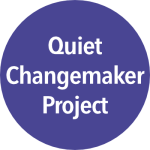Just kidding! Not 218 tips. First tip: don’t include EVERYTHING in your resume.
Yesterday I shared tips for resume design. Today: content.
Recap
I have some pretty strong feelings to share, with the caveat that I am just one opinionated person – other people are opinionated in other ways, so a perfect resume for one hiring manager is just “meh” for another.
Firstly, I usually don’t read cover letters unless the resume is a good one, so be sure that your resume…is a good one.
There are two things I look for when I review job/volunteer applications. 1) The content 2) The layout
What I look for in content
Basically, does it look like you might be able to do the job I’m hiring for? And have you made it easy for me to see that?
A narrative.
A story that shows me how you came to apply for this job. Your previous experiences (work, education, volunteering, workshops/events attended, etc) have a tie to the role you are applying for. The roles I hire for are usually connected to the nonprofit sector, so demonstrating an interest in the nonprofit sector or civil society is mandatory.
If you are trying to change fields or roles, I want to see that you’ve already started that process. Taken a course. Done volunteer work. There needs to be some connection to the current role. Don’t force me to try to make mental leaps and know what’s going on in your head – I neither the time nor the mind-reading abilities.
Transferable skills are relevant, but don’t bullshit me.
I know working in retail or hospitality gives good, relevant experience to many jobs. But don’t try to over-inflate a role with the dozens of things that you were responsible for, or over explain a role unless it’s something that few people have experience with.
Leave out things that aren’t relevant.
When you’re early in your career, it’s tough…you don’t have much to include. But after a few years, some experiences aren’t as relevant any more. I often don’t include the fact that I was a high school teacher. This experience is important to me, but not necessarily for the contracts I’m pitching for. Every resume I send is tweaked to reflect the role I’m applying for, and I expect the same when I hire. Leave things out that might muddy your narrative.
Chronological, or skills-based?
I prefer a vaguely chronological resume that focuses on relevant skills. Again, I want a narrative that leads up to this current role. Do I get why you are applying? Or does it seem you’re likely shipping the identical resume all over the place?
However, if you are early in your career or are changing fields, a chronological resume can sometimes look choppy or disjointed, and doesn’t share the picture you’re hoping to create. In those cases, an way to make the narrative clearer is to lump your experiences into skills the job requires. For example, I’ve done resumes that have sections for “facilitation,” “nonprofit sector experience,” and “project management” that then list relevant experiences.
Headings
Leave out
Career objective. I’ve never understood the use of this. Times change so quickly now–if someone thinks they know where they want to be in 10 years, I’m suspicious that they are deluded or narrow minded.
Include
Relevant experience. This can be divided into work experience and volunteer experiences, but I’m OK with a merged category. Be sure to include personal projects–e.g. I include Quiet Changemaker Project–and course projects if relevant, especially if you’re early in career.
Education. An additional section for professional development is great if you’ve attended workshops, conferences, etc that are relevant.
Maybe include
Personal/professional summary. Sometimes people include a short paragraph that summarizes who they are. Unless this is incredibly well crafted and adds context that your resume can’t explain, leave it out.
Personal interests. This section can help you stand out, make the hiring manager curious. Or it could turn them off. I enjoy vegan cooking, but I’m not going to share that unless I know that’s relevant to the job because I don’t want to be lumped in with negative misconceptions of vegans. Instead, I might add that I’ve taken springboard diving lessons.
Watch your tone.
Keep a neutral, professional tone unless you can find out more from the hiring person (e.g. through Twitter/blogs). Taking a risk with tone is just that – a risk. It could move you to the top of the pile. It could mean you are a quick no. A few years ago I was hiring support for my business, and the job description was written in my person tone. Frank, honest, to the point. Subtle humour. Short, incomplete sentences. One applicant used the same tone for her application, noting in her cover letter that it was a risk. I loved it. She didn’t end up with the job, but it got her quickly into the interview pile. I’ve also received resumes with what seemed like a “braggy” or overly aggressive tone. Those go into the no pile for me (but they may work on others).
One tip to rule them all.
Treat your resume as good design. The best resume is one in which there is nothing else you could take away. Not the one in which there is nothing else to add.
